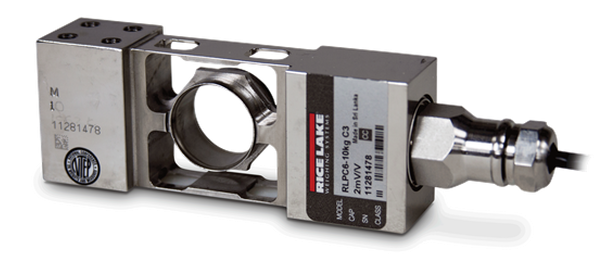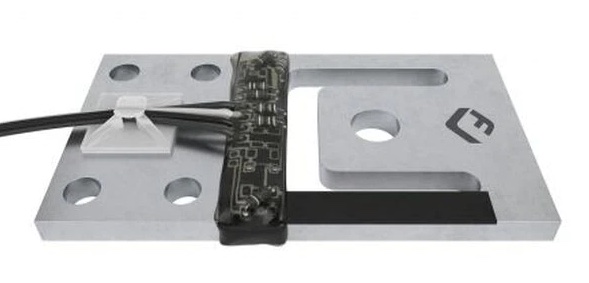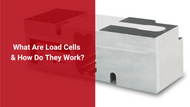What Are Load Cells and How Do They Work?
Posted by Greg J on Apr 26th 2021
Whether you're stepping onto a bathroom scale or placing food items on a price-computing scale at your local grocery store, have you ever stopped to wonder how the scale you're using actually calculates the weight of the item you're weighing?
Believe it or not, the secret to how a scale works lies in a small, internally located device known as a load cell.
What is a load cell?
A load cell, also known as a force transducer, is a small, mostly metal object that scales use to determine the weight of an object. There are many different types of load cells, each with a specific design and purpose, which we will cover more in-depth in a bit.

If a scale were a human body, then the load cells would be most like sensory neurons. They’re triggered by physical inputs from the environment (i.e., the force of the object being measured) and then convert that input into a message to send off to the brain for interpretation and response.
How does a load cell work?
Load cells work by converting a specific type of mechanical force—typically tension, torque, compression, or pressure—into an output signal. This output signal is then transmitted via a load cable to the scale’s indicator where the precise weight can be measured and read by the operator.
That’s certainly a lot to unpack, so let’s go ahead and dive into the inner workings of a load cell to hopefully shed some light on what all that means.
It should come as no surprise that the inner workings of a load cell will differ based on its type. While there are loads *ahem* of different varieties in use today, we’re going to focus here on the three most popular types: hydraulic load cells, pneumatic load cells, and strain gauge load cells.
Strain Gauge Load Cells
Of the three, strain gauge load sensors are by far the most common and can be found in nearly every type of scale manufactured today.
A strain gauge is typically constructed of a very fine wire or metal foil that’s arranged in a grid-like pattern. They can take the weight of the object acting on the load cell and convert it into an electrical signal.

Most modern load cells use a wired system of four strategically placed strain gauges for maximum measurement accuracy. When an object is placed on the scale, the resistance of each strain gauge will vary, causing a fluctuation in output voltage. It’s this change in output voltage that gets measured and converted into a digital value for the scale operator to read.
Pneumatic Load Cells
Pneumatic load sensors have been increasingly popular in laboratory settings where cleanliness and safety are of utmost importance. That’s because they are incredibly stable, able to withstand extreme temperatures, and unlike hydraulic load cells, they don’t contain any fluids that could rupture and contaminate an area.
When an object is placed on the scale, the pneumatic load cell uses a pressure gauge to measure the displacement of a pressurized gas (typically air) within an internal diaphragm. The heavier the object, the more the diaphragm will be deformed, causing more air to escape through a nozzle on the other end of the load cell.
Hydraulic Load Cells
Because hydraulic load sensors are entirely mechanical and contain no electric components, they have found plenty of use in industrial and hazardous applications such as bin, tank, and hopper weighing.
Hydraulic load cells work in a very similar way to pneumatic sensors, with the main difference being their use of an oil or another filling fluid in lieu of pressurized air. When an object is placed on the scale, that force is transferred to a piston that immediately begins compressing the oil.
Heavier objects create additional pressure in the fluid-filled diaphragm chamber. This change in pressure is measured by a hydraulic pressure gauge which then converts that reading and registers it on an external dial for the operator to record.
Where are load cells located in a scale?
While the exact location of the load cells can vary from scale to scale depending on their design and purpose, most can be found directly underneath the pan or weighing surface.
How many load cells does a scale have?
In general, a scale can contain anywhere from 1–8 load cells, depending on its size, shape, and load-bearing capacity. While 1 to 4 load cells are most common, very large capacity scales often require additional load cells.
That said, it is not recommended to use more than 8 load cells in a single scale because at that point it becomes proportionally more difficult to get an even weight distribution.
How often do scales need to be recalibrated?
As with most things, load cells are susceptible to wear and tear and are known to shift, bend, and misalign over time. To compensate for this, scales should be regularly recalibrated to maintain the most accurate measurements.
For best results, we recommend recalibrating your scales every 12 months. Of course, this timeframe may need to be adjusted based on your scale’s frequency of use and the harshness of your measuring conditions.
Still have questions? We have answers.
Want to learn more about load cells? Contact the experts at Scales Plus. We offer free product support and application assistance from trained technicians.
Don’t forget to check out our wide selection of load cells and scales for any industry. You’ll be glad you did.





